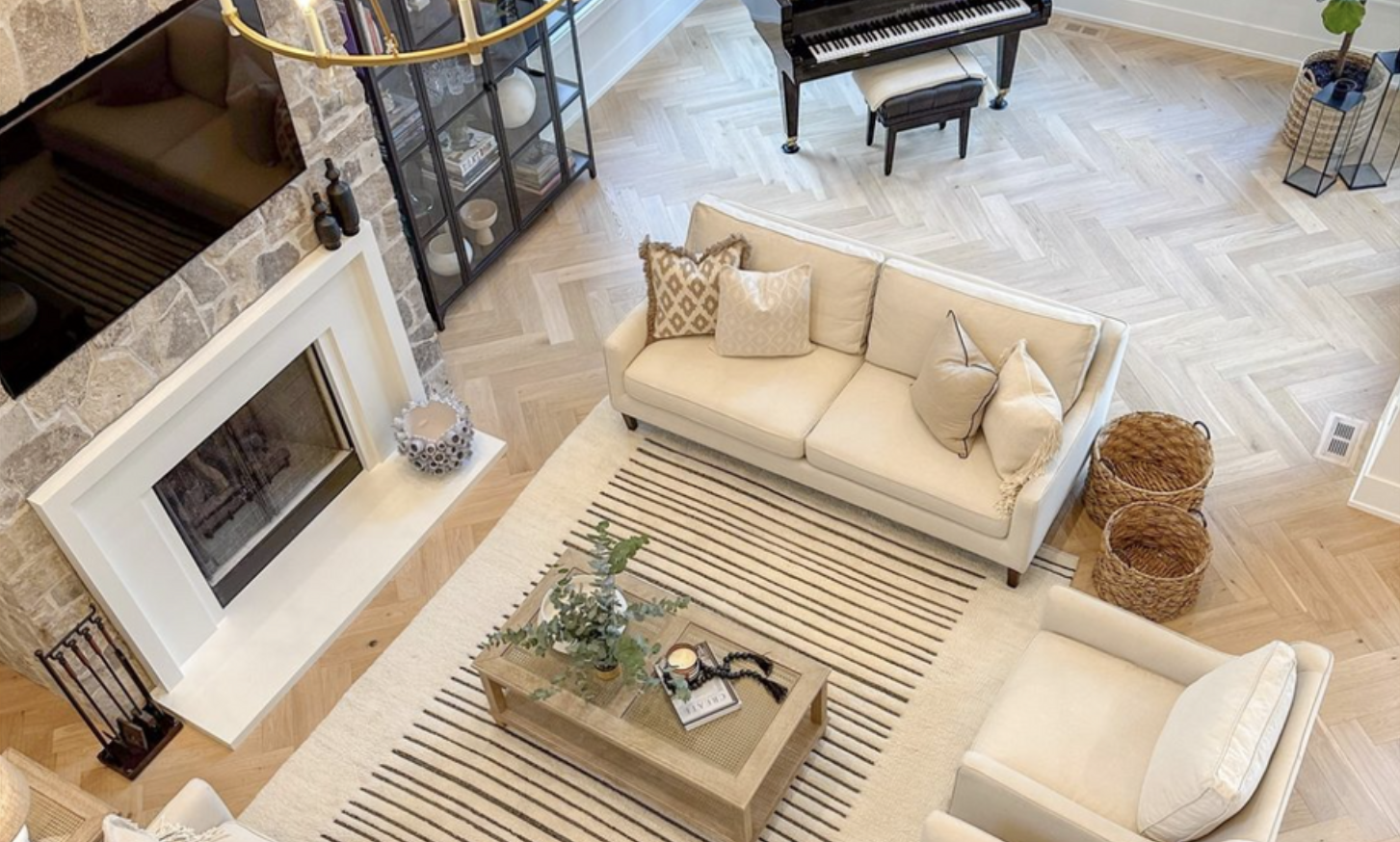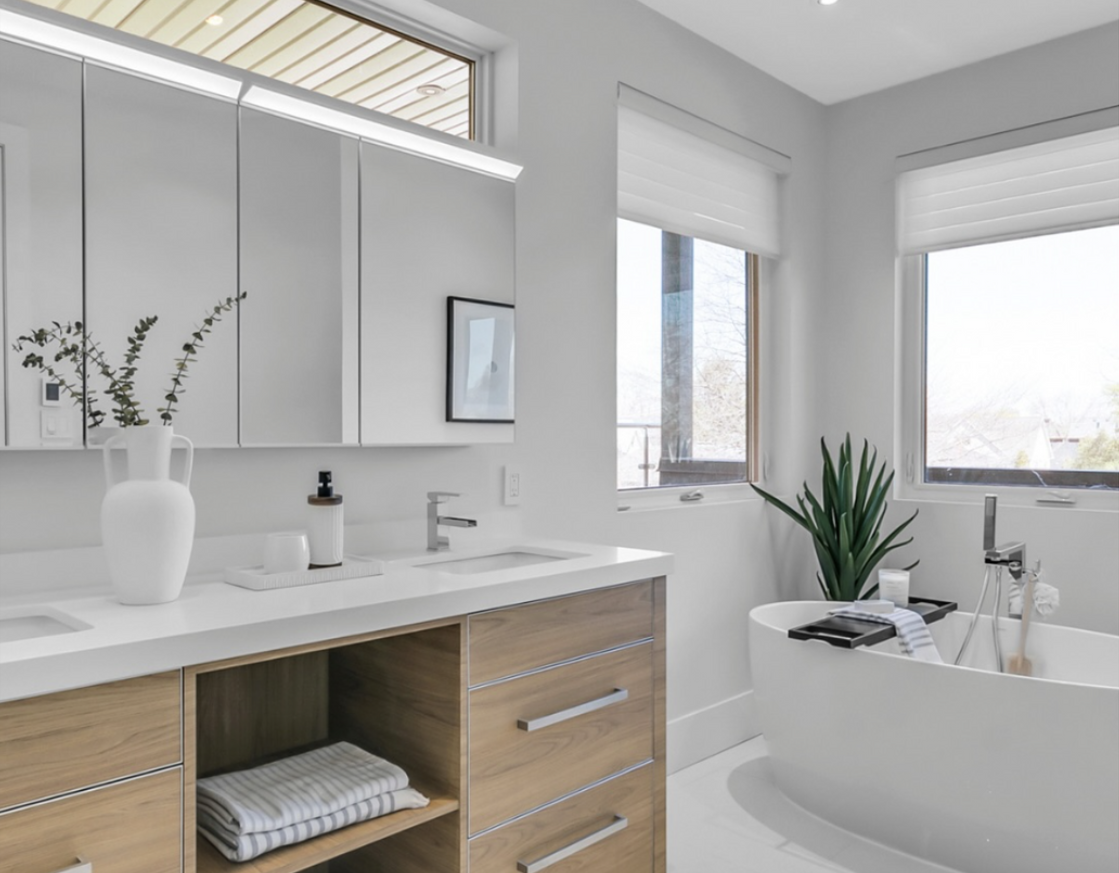Stage Like A Superstar: Secrets To Selling Your Home Faster
A strong first impression can make your home stand out, and may even lead to a quicker sale
 Written By Robert Van Rhijn
Written By Robert Van Rhijn Selling your home can be a whirlwind of emotions and tasks. But one thing that can make the process a lot smoother (and quicker!) is staging. Think of it as setting the backdrop for a performance where your home is the star.
But if you’re not sure where to start, don’t fret. We’ve gathered some expert tips from professional home stagers, Bessy and Marina at Defining Spaces to help you stage your home like a pro.
Home Staging 101: What’s the Big Deal?
Home staging is all about making your home look its absolute best for potential buyers. It’s more than just tidying up or decorating — it's creating a space where buyers can see themselves living.
“Most people can’t envision how to place their furniture in a home. So you want to create an inviting space that will allow all potential buyers to envision themselves here,” explain Bessy and Marina.
“When a home is well-staged it makes a strong first impression, which can make the home stand out and ultimately lead to a quicker sale, and potentially at a higher price.”
And who doesn’t want that!?

Less is More
The first step in staging is decluttering. This means going through your home and removing any excess items that can make your space look crowded or untidy.
As Bessy and Marina say: “Less is more. We always tell our clients ‘you’re not selling furniture, art etc., you're selling space!’”
In other words, you want to create a blank canvas that buyers can project their own lives onto. So, pack away those personal photos, knick-knacks, and anything that might distract buyers from seeing the potential of your home.
“Decluttering and de-personalizing will make any space feel larger and help potential buyers focus on the home's features and not personal belongings,” add the ladies from Defining Spaces.
Bessy and Marina also note that proper furniture placement is also critical when highlighting the home’s best features.
“This helps showcase proper flow and functionality of a room,” they told Strata.
Room-by-Room Staging Tips
“For all rooms, we would suggest a thorough professional clean,” said Bessy and Marina.
They also suggest a fresh coat of white paint, as it brightens up a space and makes it look larger.
“Updating the lighting will also brighten things up, and help give an updated modern look,” they added.
But if you want more specifics, here are some tips for each room in your house.

Living Room: Keep it cozy and inviting with a neutral colour palette and minimal furniture. Bessy and Marina also suggest adding an area rug to help define the space and add warmth.
Kitchen: Clear the countertops of all but the essentials, and a little tip from Defining Spaces: change out the hardware on your cabinets to update your kitchen and give it a fresh new look.
Bedrooms: “We love white bedding with neutral accent pillows and full coverlets to add a layered hotel inspired look,” said Bessy and Marina.
Bathrooms: Sparkling clean is the name of the game here. You can also add fluffy towels, a new shower curtain, and a fancy soap dispenser to give it a spa-like feel.
Boosting Curb Appeal
First impressions matter, so don’t neglect your home’s exterior.
“You want to entice and draw them in even before they walk through the door,” said Bessy and Marina.
Simple touches like mowing the lawn, trimming bushes, and adding a few potted plants can make a big difference. A fresh coat of paint on the front door and a clean welcome mat can also set the stage for what’s inside.
Bessy and Marina also suggest new outdoor lighting, updated house numbers and mailbox as well as a good power wash of the whole exterior.
Balancing Trends and Neutrality
While it’s tempting to go all out with the latest design trends, it’s best to keep things neutral. A neutral palette appeals to a wider range of buyers and makes it easier for them to imagine their own furniture and décor in the space.
“Too much colour is distracting and overwhelming when selling a home. It goes back to de-personalizing a space. Colour is too personal,” said Bessy and Marina.
So think soft greys, whites, and beiges for walls and larger pieces, and add pops of colour with accessories like throw pillows or artwork.

Highlighting the Home’s Best Features
Staging is all about showcasing your home’s best features. Have a beautiful fireplace? Arrange furniture around it to make it a focal point. Gorgeous view? Make sure the windows are sparkling clean and the curtains are pulled back. The goal is to draw attention to what makes your home special.
But it’s also about hiding the not-so-great features.
“When it comes to less desirable aspects, we neutralize a space by using neutral decor, accent pillows and artwork,” said Bessy and Marina.
“Proper use of staging pieces such as area rugs and decor can also redirect attention from less desirable features of a home such as old or stained carpeting, holes or imperfection in a wall and dated furniture.”
Staging on a Budget
Staging costs can be all over the map and depend on a bunch of factors. Is the house empty or lived-in? How much of the homeowner's stuff (like furniture, rugs, and art) will be used?
“On average you can expect to spend between $3,000-$4,500. For larger homes, the price can go over $5,000, but again it all comes down to what is required,” said Bessy and Marina.
If you’re on a tight budget, some cost-effective strategies the Defining Spaces experts suggest are decluttering, deep cleaning the home, and simply repairing anything that is broken inside and out.
Bessy and Marina also added: “Open all blinds and curtains to let in natural light. Use mirrors and try to re-arrange furniture to create maximum flow space. Focus on the most key rooms of a home — kitchen, living room and the prime bedroom.”
And remember, a fresh coat of paint and elbow grease can go a long way!
Starting your search for a new home? Click on any of these links to access active listings, sold listings or contact a Strata agent.
For any questions about this article or media inquires, please email media@strata.ca
